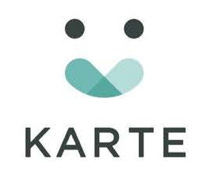Plaid (4165) | Quick Look
Share price: ¥2,900 | Market Cap: $1bn | EV/Rev: 20x
Summary
Plaid is a leading company in the field of Customer Experience and Customer Data Platforms under the Karte brand.
Clients use Karte to gain a complete understanding of their customers using online and offline data. Karte helps firms to segment clients, offer unique services and products, ultimately boosting sales and aiding customer retention.
The business is growing at over 30% annually in what is still a very under penetrated market in Japan.
Model
Plaid offers a suite of products, under the KARTE brand name, designed to improve a company’s Customer Experience (CX), especially in the realm of Digital Marketing.
KARTE (launched in 2015) is a cloud-based software as a service (SaaS) that enables organizations to make real-time, on website analysis and segmentation of website visitors. KARTE for App (2018) provides similar functionality for app operators. KARTE Datahub (2018) is a customer data platform (CDP) that allows companies to link KARTE’s behavioral data with other corporate data sources to provide a more holistic view of the customer.
The KARTE SaaS products are the key revenue driver, accounting for 95% of consolidated sales. These products currently generate an Annual Recurring Revenue (ARR) of ¥5,426 million, or around $50 million. In the most recent quarter, ARR grew at 32%.
Plaid has 517 corporate customers and KARTE is deployed on 777 websites (# of subscriptions). Around 35% of customers are Ecommerce companies, and KARTE is embedded in websites operated by the likes of Recruit, Kirin, Yahoo, ZozoTown, Japan Airlines and Mizuho, among others.
Revenue is dependent on the data processing needs generated by client website traffic. The Monthly Active Users (MAU) of analyzed sites has increased at a CAGR of over 51% over the past 6 years. As website traffic grows, subscription revenue will increase (with a lag).
Plaid’s strategy is to increase sales per client and grow its Net Revenue Retention (NRR). A customer success team is in place to enhance customer retention (lower churn) and expand upselling/cross-selling to existing clients. NRR has risen over the past 12 months from 102% to 113%.
Gross margins have been stable at 71-74% over the past year, while the company has now logged two consecutive quarters of operating profit.
The gross margin is dictated by the data analysis (ie. Server costs) generated by the websites. As pricing is annual and based on last year’s MAU, increased data usage can lead to lower gross margins in the short term, until pricing is revised up the following year.
Plaid can combat this margin pressure from higher data usage by more efficient data processing and server usage.
Sales and Marketing is the key cost, accounting for 38% of sales in the most recent quarter. This is primarily advertising costs and personnel expenses for S&M staff. This ratio has been declining recently as hiring was flat due to Covid. We expect hiring to pick up again over the next several quarters, adding to the current 200 employees.
Market
Practically everything — products, entertainment, communication, services, education, healthcare — is now available online. As consumers and businesses shift their budgets online, a digital marketing strategy is now critical for companies.
Every aspect of corporate life is now data driven. Companies with better market data and insight make smarter business decisions. KARTE helps companies to better understand customer behavior and take action on that in real-time and on an individual and personalized basis.
There is a large addressable market for a CX platform such as KARTE. There are approximately 19,000 Japanese websites that have more than 30,000 unique users according to SimilarWeb.
At Karte’s current ARPA, we estimate that the Total Addressable Market is worth around ¥130b or $1.2b.
Moat
A key feature of KARTE is integration requirements with customer systems. This is particularly important in Japan, a market with low levels of in-house IT professionals. KARTE enjoys an advantage over more fully integrated platforms like Adobe Experience Cloud, which are more costly and take longer to onboard.
Switching costs: As with many SaaS companies, the product tends to be sticky. Once rolled out within a company, the product becomes embedded and there is a real cost in changing vendors. Moreover, Plaid handles valuable corporate data, requiring deep knowledge of security and privacy protocols. Building up a strong reputation with large customers including major financial institutions takes time and is difficult for competitors to replicate.
Management
Plaid is a founder-led, experienced and shareholder aligned management team.
Total six directors, including one outside director.
Founder and CEO, Kenta Kurahashi, is ex-Rakuten, established Plaid in 2011. He owns 29% of outstanding shares (worth ~US$300 million).
CPO, Naoki Shibayama, owns 19% of outstanding shares.
The stock already has a strong institutional following with accounts such as T Rowe Price and Capital.
The company’s Long-Term Model calls for a gross margin of 75-80% and operating margin of 20-25%. We believe that the company can grow its ARR by around 30% per annum, based on a 15% CAGR in customer count and 15% growth in ARPA.
Strong Balance Sheet – Following the recent IPO, the company has a strong balance sheet with cash of ¥5.3billion, around 85% of total assets. The company recently acquired Emotion Tech for ¥1.7billion, a company that specializes in customer loyalty software.
Valuation
At a CAGR of 30%, Plaid could see sales reach around ¥20b in FY9/26 (15% market share).
Current market cap of ¥113 billion ($1 billion).
Current valuation: 20x FY9/21 EV/Sales
Relatively cheap versus Japan large cap SaaS: Freee (39X), Money Forward (24X), Rakus (36X) and SanSan (21x).
For further details on the comps, please see our Japan Disruptive Innovation sheet






